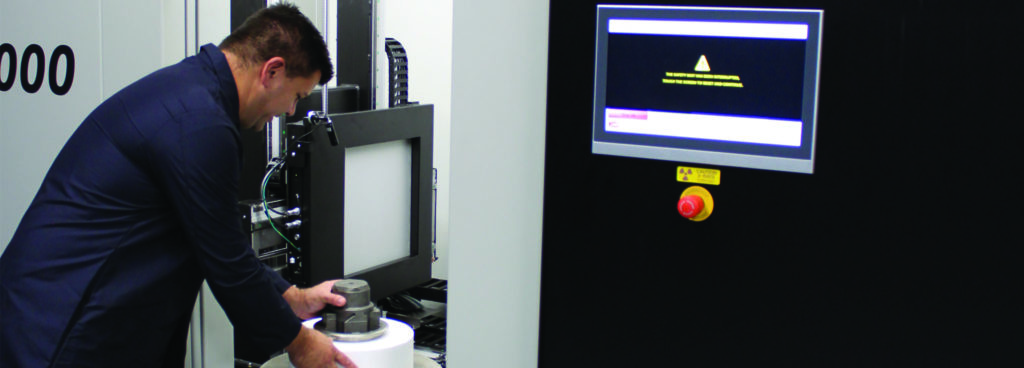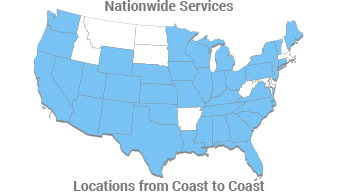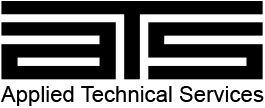- Home
- Services/IndustriesServicesindustries
- About Us
- LocationsStatesAccordion ContentAccordion ContentAccordion ContentAccordion Content
- Job Openings
- Quick Links
- ATS Family

Benefits of Our 3D Scanning Services
ATS performs 3D scanning services, both large- and small-scale, to help clients determine the condition of their assets nondestructively.
Often, the cause is not immediately apparent when a critical part fails in a piece of equipment. In these instances, companies turn to failure analysis services to gain an understanding of what went wrong. Many of these companies provide 3D scanning services to diagnose what caused the part to fail. This method is effective because it scans a model of the component which can then be closely analyzed. The tester can examine and manipulate these models with greater ease and in more ways than the physical test sample. Finding surface flaws is easy when comparing the 3D scan of the part to its CAD model, and measuring those flaws with an exact precision is possible due to computer assistance. These features make 3D scanning services very attractive to industrial businesses for not only failure analysis, but metrology and preventative maintenance efforts as well.
Shortcomings of 3D Scanning
There are, however, certain limitations to this process: parts can have internal components which may have contributed to the part failure, the structural flaws may not be visible on the surface, or voids may exist within the material itself. 3D scanning cannot pick up on any of these issues on its own, and not all specimens can be subjected to destructive testing. Computed Tomography (CT) scanning addresses these concerns, providing more useful information than 3D scanning services in these scenarios.
The Case for CT Over 3D Scanning Services
CT scanning takes a series X-rays of the test material from various angles. These grayscale projections show a cross-sectional view of the test material as if it had been perfectly sectioned, allowing engineers to look inside without dismantling the part. The imaging is precise enough to show and measure microscopic structural flaws – either outside or inside of the test material. All of the projections can be assembled to create an X-rayed, 3D model of the test material, which allows engineers to easily view and scale the model of the internal components for closer analysis. Engineers may then put together a 3D simulation of the part performing its function, and view the stresses and pressures exerted on internal components in an actual use scenario. Computed Tomography combines the insight yielded by traditional radiography methods and the versatility of scanning a 3D model into one multifaceted testing service.
One of the most compelling points in CT’s favor over 3D scanning is the comprehensive nature of the inspection. While 3D scanning is more helpful in large projects (CT scanners are only used for parts and components, not entire systems and buildings), Computed Tomography can be used to obtain information for a variety of areas that would otherwise demand multiple tests to discover. 3D scanning cannot, for instance, measure the thickness of a test subject’s surface material by itself. Finding out this information would usually require a second inspection, such as an ultrasonic thickness test; CT scanning enables us to find all this information in a single CT inspection.
ATS and CT Scanning
Applied Technical Services now offers CT scanning services due to recent improvements in supporting technology. Our trained and certified technicians examine test materials with the unparalleled detail afforded by Computed Tomography and quickly produce accurate findings. ATS is one of the few testing services providers that currently offer CT scanning, and we are breaking new ground on this method as it applies to industrial inspections. We provide businesses extended support regarding their critical parts – whether it is explaining test results in a detailed manner or sending clients off with a copy of the 3D model we generated with CT to compare against their CAD models.
We use the following cutting-edge equipment to perform our CT scanning services:
- Northstar Imaging X5000
- Minifocus 450kV X-ray projector (0.016” Focal spot at 3mA)
- Dual energy capability with 225kV Microfocus X-ray Machine
- Can achieve focal size as low as 0.0002” (based on voltage)
- Multi-Axis Manipulator (x, z, tilt, rotation), capable of supporting max 250 lb
- Resolution of manipulator angle is 0.001°
- Capture elongated subjects unable to fit within a single exposure by scanning with a spiral acquisition
- Zeiss Metrotom 1500, with a 225kV micro-focus
- Annual A2LA calibration
- Certified to accuracy within 4.5 microns
- Chamber fits specimens up to 11.75 in (300mm) in diameter x 23.6 in (600mm) high. 50 kg (110 lb) weight limit.
The same technology empowering doctors to find minuscule tumors in a patient’s brain is now being used by our engineers to find tiny voids in castings. Allow us to give your equipment’s critical parts a clean bill of health with our comprehensive CT scanning services.

Request Form
"*" indicates required fields
